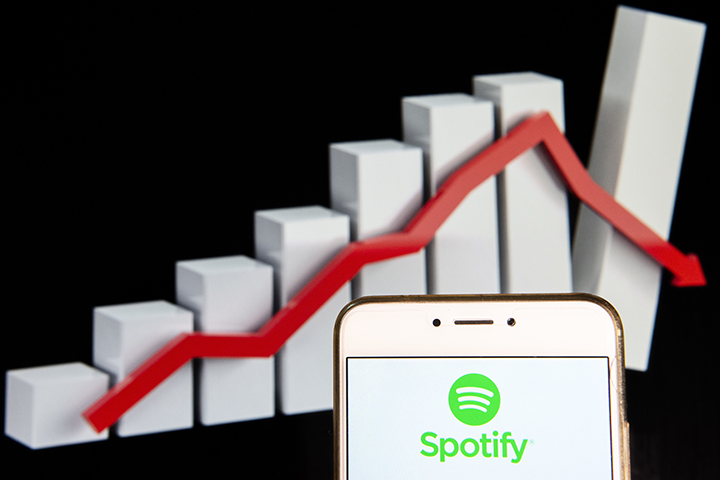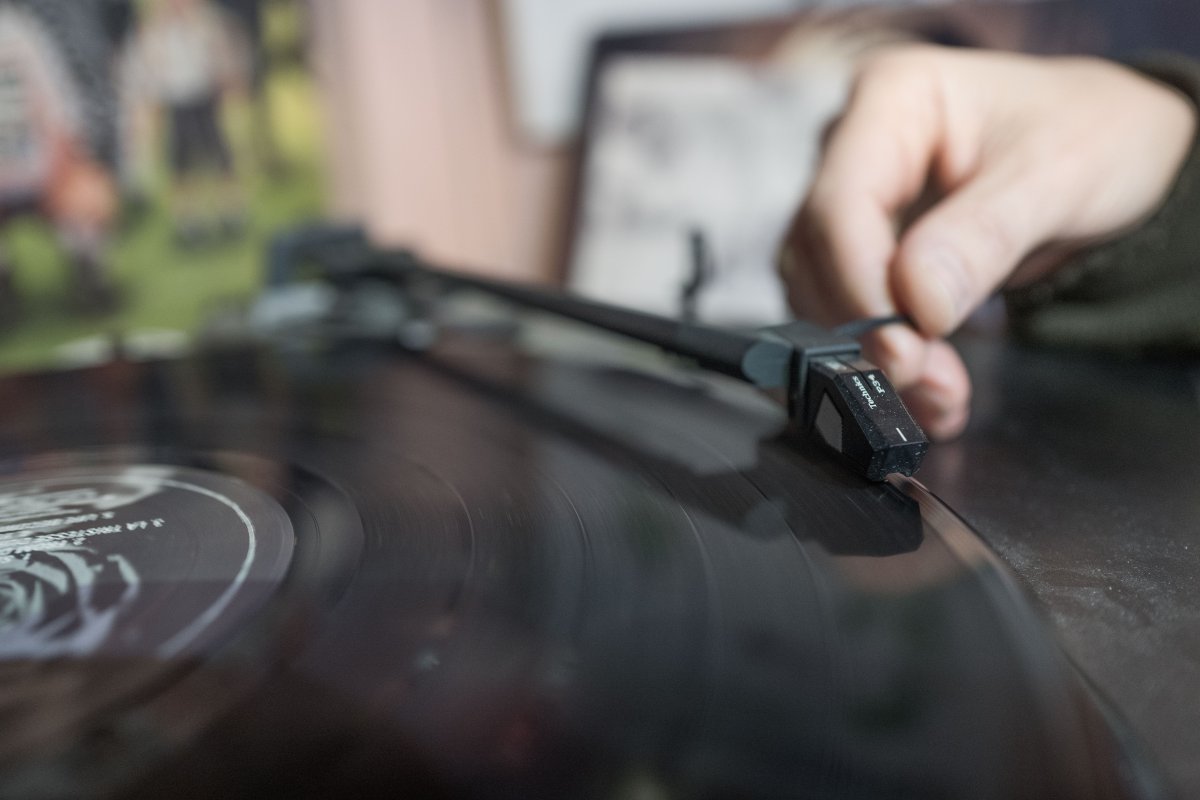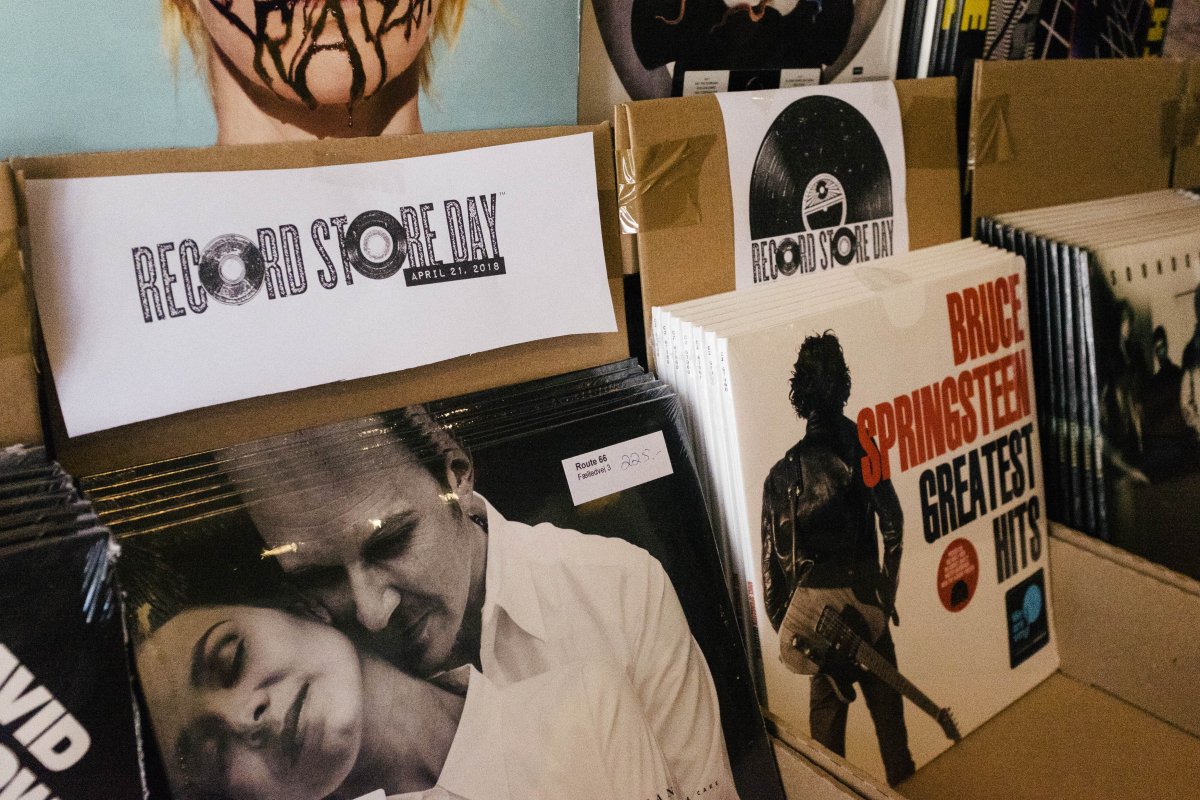In the height of the digital age, streaming may seem like the furthest we may ever advance in terms of listening to music.

Why? Because it’s simple, it’s accessible and it’s much more affordable than any other format.
These convenience factors may seem enticing, however, by no means is streaming music a more viable green alternative to the ever-dwindling physical music format.
That’s right, according to ‘The Cost of Music’ — a joint study penned by the University of Glasgow and the University of Oslo — listening to music online takes more of a toll on our environment than it does to actually create physical music, whether that be CDs, cassettes or vinyl LPs.
READ MORE: In light of the Ticketmaster investigation, are there other ways to get tickets?
Major services like Spotify, Apple Music, Tidal and SoundCloud are dominating the industry not only because they’re cheap, but because the era of the album is essentially no more.
In the digital age, Top 40 radio hits and Billboard charts consist typically of singles and features only — which renders a majority of new albums obsolete.
Many of these singles are released exclusively to digital platforms, which doesn’t even allow for an alternative listening method.
The beauty of streaming is that it provides listeners with the newest and trendiest music at the snap of a finger, as opposed to physical albums which cost a lot more, and in comparison, restrict the listener to what they’re listening to.
As a result, streaming has paved the way forward for a massive amount of music listeners — especially young ones.
Unfortunately for these listeners, however, they are unintentionally helping to increase greenhouse gas emissions across the globe, according to the recent study.
READ MORE: The best moments in Canadian music of 2018
Before the digital age, plastic consumption was the biggest concern in how music affects the environment. But now, more than ever, the industry is contributing an unprecedented amount to climate change.
While vinyl, cassettes and CDs used millions upon millions of kilograms in plastic to be created since the 1970s, that usage has almost doubled as a result of streaming.
How? Because the generation of electricity required to store, transmit, download and stream music digitally has produced greenhouse gases at a much higher rate, according to the study.
An associate professor in music from the University of Oslo, Dr. Kyle Devine, said, “These figures may suggest that the rise of downloading and streaming is making music more environmentally friendly. But a very different picture emerges when we think about the energy used to power online music listening.”
“Storing and processing music online uses a tremendous amount of resources and energy,” he added, which has a high impact on the environment.”
In the American recording industry alone, plastics have been cut down from 58-million kilograms in 1977 to only 8 million in 2016, however, the energy required to sustain all platforms of the digital age is causing an alarming amount of damage, more than the plastic ever did.
“From a plastic pollution perspective,” continued Dr. Devine, “the good news is that overall plastic production in the recording industry has diminished since the heyday of vinyl.”
“From a carbon emissions perspective, however, the transition towards streaming recorded music from internet-connected devices has resulted in significantly higher carbon emissions than at any previous point in the history of music.”
According to “The Cost of Music,” greenhouse gases were recorded at 140-million kilograms in 1977, 136 million in 1988 and a whopping 157 million in 2000, but 2016’s estimates came in between 200- and 350-million kilograms in the U.S. alone.
The study was published ahead of next week’s highly-anticipated Record Store Day in hopes to raise awareness on the impacts of streaming.
READ MORE: Lil Nas X’s ‘Old Town Road’ rockets to No. 1 following controversy
Record Store Day— the biannual event that takes place at a number of independent record stores across the globe every April and November — encourages listeners and audiophiles alike to buy physical and support local record stores or retailers.
However, further research found that while the price that listeners are willing to pay has fluctuated dramatically across each format of music, now, in the digital age, it is the cheapest it has ever been.
Back in 1977 — the era of the album and the height in popularity and sales of vinyl records — consumers would pay, on average, US$28.55 for a single album, opposed to a digitally downloaded album from iTunes, which would run the average listener $11.11 in 2013.
Dr. Matt Brennan — key researcher at the school of culture and creative arts at the University of Glasgow — hoped the study would be able to convey in detail just how much streaming has affected our economy:
“The point of this research is not to tell consumers that they should not listen to music,” he said, “but to gain an appreciation of the changing costs involved in our music consumption behaviour.”
In 2000, a CD would typically cost $21.59, while the cassette tape sold for around $16.66 in 1988. Although the prices have fluctuated over the years, formats have generally stayed the same.
Due to limited availability, production and import costs, vinyl records and CDs have seemingly retained these higher price points throughout their existence.
Unfortunately for many artists, streaming doesn’t pay out as well as selling albums once did. This explains for the heavy touring schedules which are seen across the board annually for bands both big and small or old and new.
The amount of money listeners are willing to spend on music has dropped massively since the peak of vinyl sales in 1977. On average, consumers once spent 4.83 per cent of their weekly salary on music, compared to 1.22 per cent in 2016.
Musicians now rely heavily on making a living from ticket sales and merchandising.
READ MORE: Michael Jackson sexual abuse allegations: A timeline
“The Cost of Music” encourages listeners to find alternatives in listening to music. “We hope the findings might encourage change toward more sustainable consumption choices and services that remunerate music creators while mitigating environmental impact,” said Dr. Brennan.
While streaming cuts down majorly on plastic consumption — not only music, but movies and video games too — it unintentionally creates more greenhouse gases by consuming more energy in the long-run.
Not only does streaming take away from the health of the environment, but it also drags down the economy with appealing monthly subscription rates and cheaper albums, according to the study. Ultimately though, it affects how musicians are getting paid for their efforts.
The pros and cons of streaming vs. physical consumption of music remain a highly controversial topic among listeners across a variety of eras and genres — just as it was once the CD vs. the cassette — but in the end, it all comes down to personal preference.
‘The Cost of Music’ was published on April 8. For additional details, statistics and infographs, you can read the full study through the University of Glasgow.








Comments